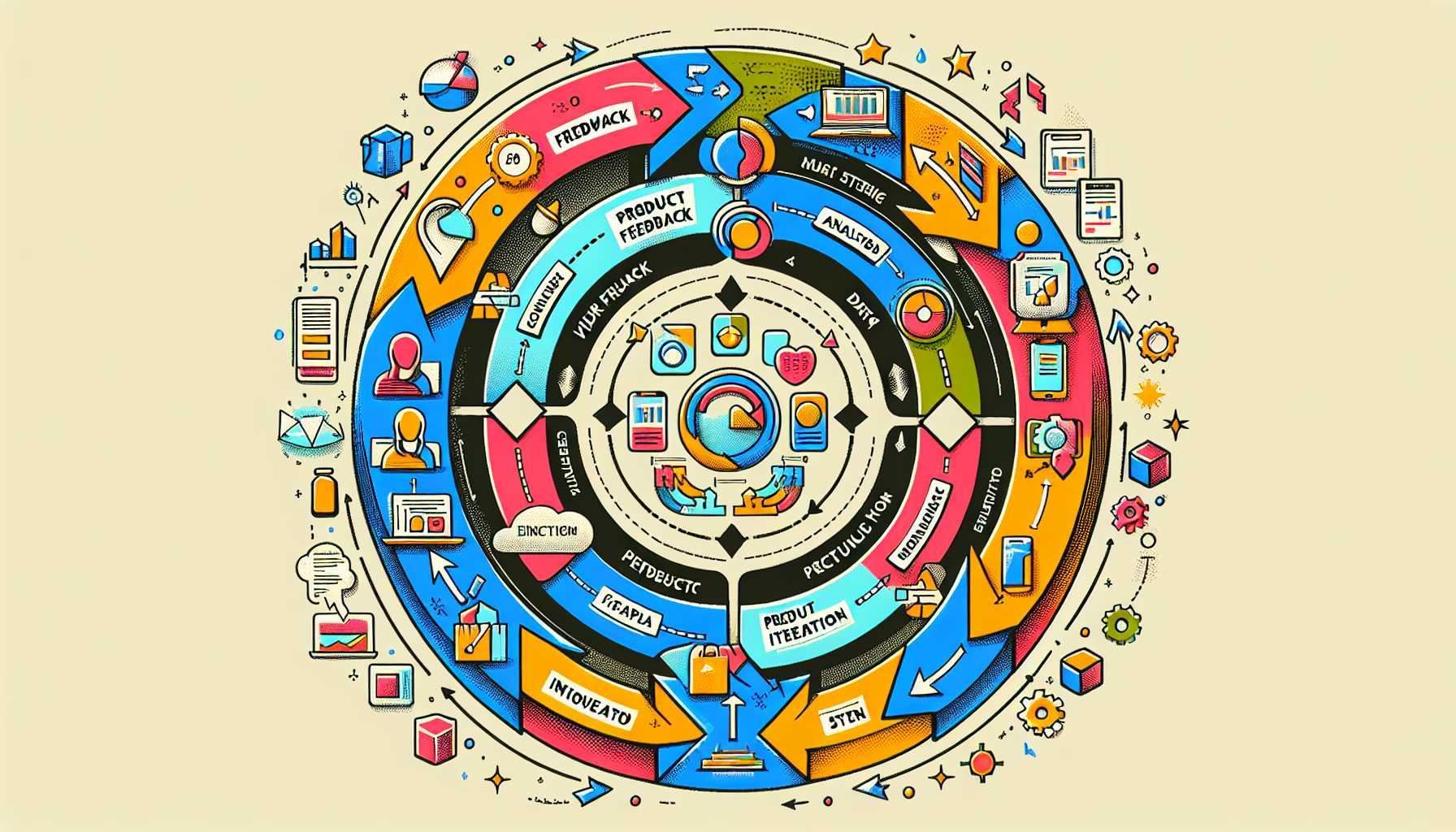Welcome to another installment of deep dives into the world of product management. Today, we’re taking a close look at one of the cornerstones of product success: feedback loops and user testing. Crafting effective strategies for managing these aspects of product development is crucial, and in this post, I’ll share some of the approaches I’ve honed over years of leading tech products to market.
Understanding Feedback Loops
Before we delve into strategies, let’s establish what we mean by a product feedback loop. A feedback loop in product management refers to the cyclical process through which we gather user insights, interpret them, implement changes, and then collect more feedback to start the loop again.
The Significance of Robust Feedback Loops
Effective feedback loops are the lifeblood of product innovation. They enable us to stay in tune with user needs, anticipate market shifts, and iterate quickly. In my own experience, fine-tuning feedback loops has been the difference between a product that stagnates and one that evolves and thrives.
User Testing: The Conduit of User Insights
User testing is the method by which we tap into user thought processes and behaviors. There’s a litany of methods available, from A/B testing to usability studies, each with its own advantages and places within the feedback loop.
Strategies for Managing Feedback Loops and User Testing
Now, let’s explore the strategies that can help create and manage effective feedback loops and user testing in tech.
1. Establishing Continuous Feedback Channels
Continuous feedback channels are vital. In a SaaS product I spearheaded, we implemented several touchpoints for feedback: in-app surveys, analytics, email communications, and a dedicated feedback portal. Remember, frequency and diversity in feedback channels ensure a representative sample of user opinions.
2. Democratizing Feedback
Every user’s perspective is valuable. By involving users from different segments, you can avoid designing for just the vocal minority. In more than one project, this broader feedback base has revealed blind spots that we wouldn’t have caught until much later, if at all.
3. Prioritizing Actionable Feedback
Not all feedback is created equal. Learning to prioritize actionable feedback is a skill that’s sharpened over time. Use frameworks like RICE (Reach, Impact, Confidence, and Effort) to evaluate feedback and decide which suggestions to act on for maximum impact on your product goals.
4. Rapid Prototyping and Iteration
Rapid prototyping, followed by swift user testing, allows for iterating on feedback quickly. This approach helps in refining ideas and confirming hypotheses in real-time. In my journey, tools like Sketch and InVision have proven invaluable in this iterative process.
5. Integrating Feedback into the Development Cycle
Marrying user feedback with development is a delicate balance that requires meticulous planning. Agile methodologies can facilitate this integration, with sprints providing regular opportunities to incorporate feedback into the product roadmap.
6. Balancing Quantitative and Qualitative Data
Quantitative data answers the “what,” while qualitative data explains the “why.” In my role, I always emphasized the synergy between the two, as they together provide a holistic view of user experience that one alone cannot.
7. Educating Users to Provide Constructive Feedback
Users often have valuable insights, but they might not express them constructively. I’ve witnessed how educational materials and guided feedback sessions can improve the quality of user input significantly.
8. Keeping Loops Tight and Focused
Larger loops can slow down the feedback process and make insights less actionable. By keeping loops tight — focusing on specific features or experiences at a time — the feedback is fresher and more relevant.
9. Navigating Negative Feedback
Negative feedback, while challenging, is a treasure trove of opportunity. My mantra has been to analyze, not agonize. I recall instances where negative feedback led to our most significant breakthroughs after careful examination.
10. Celebrating Successes and Learning from Failures
Feedback loops aren’t just about improving the product; they’re also about team learning and growth. Celebrate when feedback results in wins, and use losses as a stepping stone for betterment. Positive reinforcement can boost team morale and foster an environment of continuous improvement.
Final Thoughts
In conclusion, managing product feedback loops and user testing is an art that involves listening actively, iterating swiftly, and always learning. The strategies I’ve outlined are not exhaustive but have been instrumental in the successes of the products I’ve had the honor to lead. Effectively managed, feedback loops and user testing are the engines of innovation that can propel a good product into greatness. Keep tuning those loops, and stay user-obsessed, my fellow product leaders.
I hope these insights have resonated with your own experiences or sparked new ideas for your next product iteration. Keep refining, and until next time, stay agile and user-focused!

